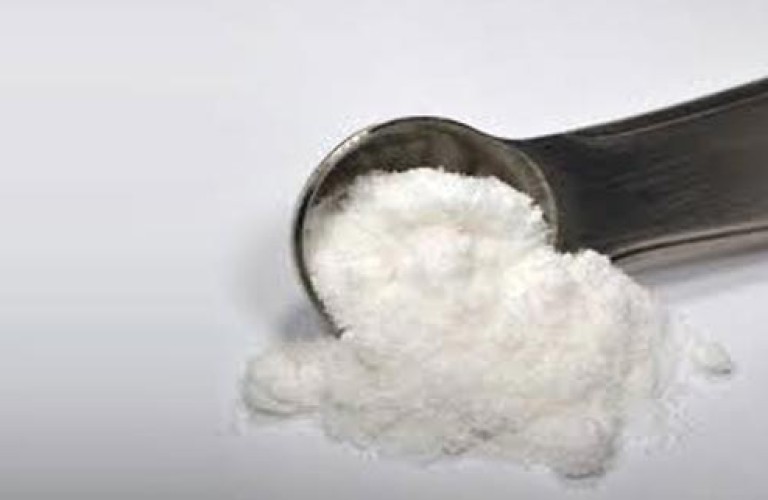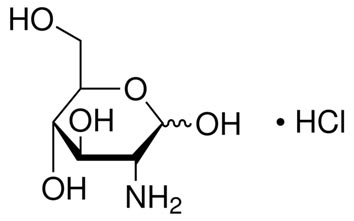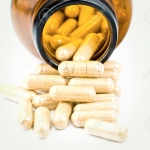Glucosamine Hydrochloride

One complementary medication that has been investigated for the treatment of OA is glucosamine. Glucosamine is a derivative of cellular glucose metabolism. It is also a component of glycosaminoglycans and proteoglycans of the cartilage matrix covering the ends of bones and hyaluronic acid which is a part of synovial fluid within the joint. The primary source of exogenous glucosamine is the exoskeleton of shellfish and exists in primarily two formulations, glucosamine hydrochloride (HCl) and glucosamine sulfate. Glucosamine sulfate requires compound stabilizers in the form of salts and has 74% purity. Glucosamine HCl lacks the sulfate group and has 99% purity. Therefore, glucosamine HCl in a dosage of 1,500 mg equals a dosage of 2,608 mg of glucosamine sulfate. Glucosamine is readily absorbed from the gastrointestinal tract with oral administration, rapidly undergoes metabolism via the liver and the first pass effect, and is eliminated through the feces and urine. Peak levels are in about 8 hours after oral ingestion primarily due to about 90% protein binding.
| Chemical Structure |
 |
The mechanism of action of glucosamine in humans is unknown. Because glucosamine is a part of the cartilage matrix in joint tissues, it has been theorized for many years that its administration could affect symptomatic relief for OA sufferers by supplying the components for cartilage repair and thus improve pain and disability. More recently, however, it has been demonstrated in animal models that glucosamine has an anti-inflammatory effect via the reduction of nuclear factor kappa beta induced by interleukin-1 (IL-1). A few studies in humans have revealed that glucosamine HCl reduces IL-1 stimulated production of catabolic enzymes and inflammatory markers such as prostaglandin E2 by chondrocyte and synovial cells harvested from surgical specimens removed from patients with OA.
© 2024 Prakruti Products. All Rights are Reserved.
A WebSpotLight Creation by EBSL AUTOMAT.









